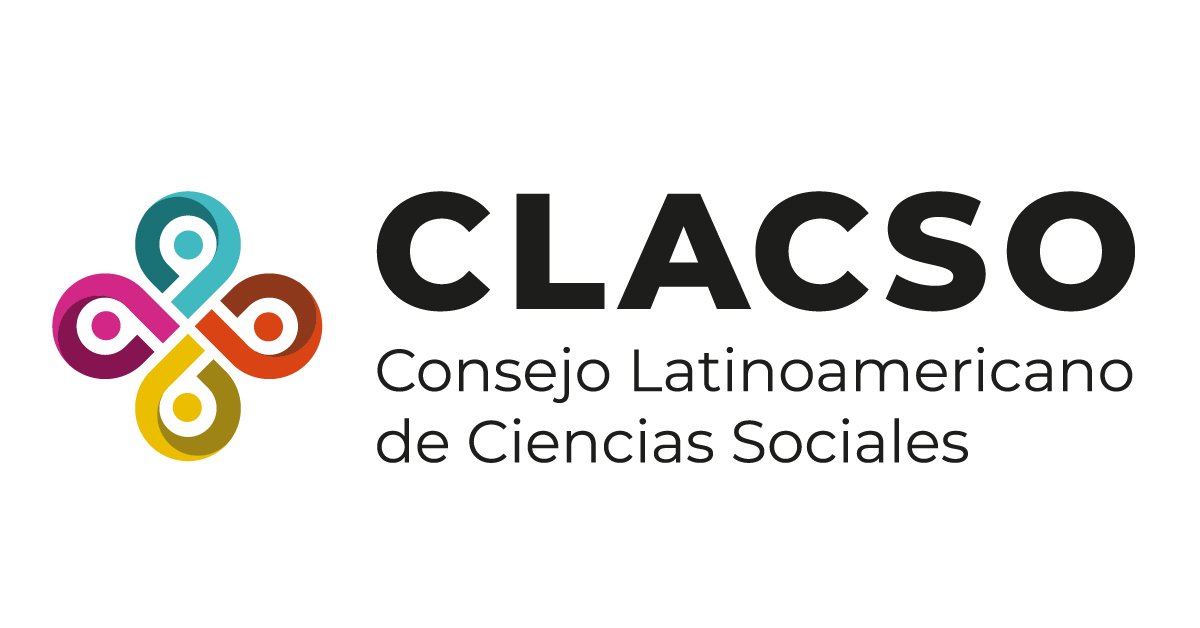Análisis de la fragmentación y del efecto de borde del Parque Nacional Henri Pittier, Venezuela
Analysis of the fragmentation and edge effect of the Henri Pittier National Park, Venezuela
DOI:
https://doi.org/10.47069/estudios-ambientales.v2i2.1577Palabras clave:
área protegida, análisis espacial, cobertura vegetal, cuencas hidrográficas, zonificación, protected area, spatial analysis, vegetation cover, hydrographic basins, zoningResumen
La fragmentación ha sido identificada como la mayor amenaza que hoy día están padeciendo los ecosistemas del mundo; y entre éstos, en los bosques nublados. Este estudio analiza las afectaciones espaciales del Parque Nacional Henri Pittier (PNHP), Venezuela por el efecto de borde generado por fraccionamientos. Los objetivos fueron identificar, cuantificar y analizar espacialmente los efectos bordes en las unidades de cobertura vegetal, zonificación y cuencas hidrográficas del parque. Estos efectos son generados dentro del área del parque por fragmentación y por usos incompatibles tanto adentro como afuera de la poligonal del PNHP. La metodología se basó en un modelo hipotético, construido mediante revisión documental sobre alteraciones de ecosistemas boscosos tropicales. Se usaron dos softwares de sistemas de información geográfica, así como la herramienta “buffer” del ArcGis. Los resultados arrojaron que el área del parque bajo el efecto de borde es de aproximadamente 35 %. Los herbazales, la Zona de Recuperación Natural (ZRN) (60,8 %) y las cuencas hidrográficas El Castaño (15,5 %), El Limón (13,8 %) y Polvorín (13,1 %) en la vertiente sur y Choroní (24,7 %), en la vertiente norte, fueron identificados como las unidades más afectadas. El fraccionamiento y sus respectivos bordes deben estar afectando desfavorablemente los servicios ecosistémicos del parque; hay evidencias de estados de amenazas para algunas especies de la fauna. Por lo anterior, sería adecuado incluir en estudios futuros análisis sobre afectaciones a los servicios ecosistémicos generadas por fragmentación y efecto de borde.
Abstract
Fragmentation has been identified as the greatest threat that the world's ecosystems are suffering today; and between these, in the cloud forests. This study analyzes the spatial effects of the Henri Pittier National Park (PNHP), Venezuela due to the edge effect generated by subdivisions. The objectives were to identify, quantify, and spatially analyze the edge effects in the park's vegetation cover, zoning, and watershed units. These effects are generated within the park area by fragmentation and by incompatible uses both inside and outside the PNHP polygon. The methodology was based on a hypothetical model, built through documentary review on alterations of tropical forest ecosystems. Two geographic information system software were used, as well as the ArcGis "buffer" tool. The results showed that the park area under the edge effect is approximately 35%. The grasslands, the Natural Recovery Zone (ZRN) (60.8%) and the El Castaño (15.5%), El Limón (13.8%) and Polvorín (13.1%) hydrographic basins on the southern slope and Choroní (24.7%), on the northern slope were identified as the most affected units. The subdivision and its respective borders must be unfavorably affecting the park's ecosystem services; there is evidence of threat states for some species of fauna. Therefore, it would be appropriate to include in future studies analyzes of effects on ecosystem services generated by fragmentation and edge effect.
Citas
Abarca, O. y Quiroz J.G. (2005). Modelado cartográfico de riesgo de incendios en el Parque Nacional Henri Pittier. Estudio de caso: vertiente sur, área colindante con la ciudad de Maracay. Agronomía Tropical, 55(1), 35-62. http://ve.scielo.org/scielo.php?pid=S0002-192X2005000100003&script=sci_abstract
Andrews, A. (1990). Fragmentation of habitat by roads and utility corridors: a review. Australian Zoologist. 26(3), 130-141.sart
Bossart, J.L. y Opuni, E. (2009). Distance from edge determines fruit-feeding butterfly community diversity. Afrotropical forest fragments. Environmental entomology, 38(1), 43-52. http://www2.kslu.org/acad_research/depts/biol/faculty/publications/pdf/2009/bossart_opuni_frimpo.pdf
Brashares, J.S., Arcese, P., y Sam, M.K. (2001). Human demography and reserve size predict wildlife extinction in West Africa. Proc. R. Soc. Land. B, 268, 2473-2478. www.ncbi.nlm.nih.gov/pmc/articles/PMC1088902/pdf/PB012473.pdf
Briant, G., Gond, V. y Laurance, S.G.W. (2010). Habitat fragmentation and the desiccation of forest canopies: a case study from eastern Amazonia. Biological Conservation, 143(11), 2763-2769. https://d1wqtxts1xzle7.cloudfront.net/47325609/Habitat_fragmentation_and_the_desiccatio20160718-9214-x8kvmj.pdf?1468853473=&response-content-disposition=inline%3B+filename%3DHabitat_fragmentation_and_the_desiccatio.pdf&
Cayuela, L., Rey, J.M. y Echeverría, C. (2006). Clearance and fragmentation of tropical montane forests in the Highlands of Chiapas, México (1975-2000). Forest Ecology and Management, 226, 208-218. https://citeseerx.ist.psu.edu/viewdoc/download?doi=10.1.1.407.702&rep=rep1&type=pdf
Cochrane, M.A. (2001). Synergistic interaction between habitat fragmentation and fire in evergreen tropical forests. Conservation Biology, 15(6), 1515-1521. http://library.bfreebz.org/Plant%20Ecology/Mark%20A.%20Cochrane,%20Synergistic%20Interactions%20between%20Habitat%20Fragmentation%20and%20Fire%20in%20Evergreen%20Tropical%20Forests,%202001.pdf
Cochrane, M.A. (2003). Fire science for rainforests. Nature, 421, 913-919. https://queimadas.dgi.inpe.br/~rqueimadas/material3os/2003_Chochrane_Fire_Nature_DE3os.pdf
Cochrane, M.A., y Laurance, W.F. (2002). Fire as a large-scale edge effect in Amazonian forests. Journal of Tropical Ecology, 18(03), 311-325. https://repository.si.edu/bitstream/handle/10088/1596/Cochrane_and_Laurance_2002.pdf?isAllowed=y&sequence=1
Cochrane, M.A., y Laurance, W.F. (2008). Synergisms among fire, land use, and climate change in the Amazon. AMBIO: A Journal of the Human Environment, 37(7), 522-527. https://repository.si.edu/bitstream/handle/10088/15881/stri_Cochrane_and_Laurance_2008.pdf?sequence=1&isAllowed=y
Coffin, A. W. (2007). From roadkill to road ecology: a review of the ecological effects of roads. [Versión digital], Journal of transport Geography, 15(5), 396-406. https://www.researchgate.net/profile/Alisa-Coffin/publication/222688089_From_roadkill_to_road_ecology_A_review_of_the_ecological_effects_of_roads/links/59dfcdfea6fdcca98420e3b4/From-roadkill-to-road-ecology-A-review-of-the-ecological-effects-of-roads.pdf
Delgado, J.D., Arroyo, N.L., Arévalo, J.R., & Fernández-Palacios, J.M. (2007). Edge effects of roads on temperature, light, canopy cover, and canopy height in laurel and pine forests (Tenerife, Canary Islands). Landscape and Urban Planning, 81(4), 328-340.
DeFries, R., A. Hansen, A. C. Newton, y M. C. Hansen. (2005). Increasing isolation of protected areas in tropical forests over the past twenty years. Ecological Applications, 15(1), 19-26. https://www.montana.edu/hansenlab/documents/downloadables/defriesetal2005_1.pdf
Elias, N. (2008). Road edge effect on forest canopy structure and epiphyte biodiversity in a tropical mountainous rainforestNyungwe National Park, Rwanda (Doctoral dissertation, MSc. thesis, International Institute for Geo-Information Science and Earth Observation Netherlands). http://www.itc.nl/library/papers_2008/msc/nrm/nyandwi.pdf
Esparza, A.X., y Carruthers, J.I. (2000). Land Use Planning and Exurbanization in the Rural Mountain West Evidence from Arizona. Journal of Planning Education and Research, 20(1), 23-36.
Ewers, R.M., Thorpe, S., y Didham, R.K. (2007). Synergistic interactions between edge and area effects in a heavily fragmented landscape. Ecology, 88(1), 96-106.
Forman, R.T. (2000). Estimate of the area affected ecologically by the road system in the United States. Conservation biology, 14(1), 31-35. https://www.fws.gov/southwest/es/documents/R2ES/LitCited/LPC_2012/Forman_2000.pdf
Forman, R. T., y Alexander, L. E. (1998). Roads and their major ecological effects. Annual review of ecology and systematics. Annual Review of Ecology, Evolution, and Systematics, 29, 207–231. https://pracownia.org.pl/upload/filemanager/pracownia.org.pl/Rospuda/roads_and_their_major_ecological_effects-1998.pdf
Forman, R.T.T., Friedman, D.S., Fitzhenry, D., Martin, J.D., Chen, A.S. y Alexander, L.E. (1997). Ecological effects of raods: Towards three summary indices and an overview for North America. En: Canters, K., Piepers, A. and Hendriks-Heersma, A., (Eds.) Proceedings of the international conference on Habitat fragmentation, infrastructure and the role of ecological engineering Maastricht y DenHague 1995. (pp. 40-54). Delft, The Netherlands: Ministry of Transport, Public Works and Water Management, Road and Hydraulic Engineering division. http://www.lauxen.net/conecte/referencias/Forman_1997a.pdf
Garrido P., E.I. (2020). La Biogeografía de Islas: herramienta científica y tecnológica de lo microscópico a lo universal. [Versión Digital]. Invest. Pens. Crit, 8(1), pp. 84 – 92. https://www.researchgate.net/profile/Edgardo-I-Garrido-Perez/publication/338955493_La_Biogeografia_de_Islas_herramienta_cientifica_y_tecnologica_de_lo_microscopico_a_lo_universal/links/5e348db9a6fdccd9657c0053/La-Biogeografia-de-Islas-herramienta-cientifica-y-tecnologica-de-lo-microscopico-a-lo-universal.pdf
Giambelluca, T.W., Ziegler, A.D., Nullet, M.A., Truong, D.M. y Tran, L.T. (2003). Transpiration in a small tropical forest patch. Agricultural and Forest Meteorology, 117, 1–22. https://tintuc.vnu.edu.vn/upload/scopus/2011/04/15/Dat-834.pdf
González, R. y Escalona, D. (2020). América Latina: Una mirada histórico-estructural de la relación entre modos de desarrollo y bienes naturales. Revista de la Academia/ISSN, 719, 6318. http://revistas.academia.cl/index.php/academia/article/view/1677/1916
Gurrutxaga S V., M. y Lozano V., P. J. (2006). Efectos de la fragmentación de hábitats y pérdida de conectividad ecológica dentro de la dinámica territorial. Polígonos. Revista de Geografía, 16, 35-54. https://pdfs.semanticscholar.org/d2ad/5972d0401eb59168152b21c6ad6c645c9948.pdf
Hansen, A. J., y R. DeFries. (2007). Ecological mechanisms linking protected areas to surrounding lands. Ecological Applications, 17(4), 974-988. https://www.montana.edu/hansenlab/documents/downloadables/HansenDeFriesMechanisms2007.pdf
Harper, K.A. y MacDonald, S.E. (2002). Structure and composition of edges next to regenerating clear-cuts in mixed-wood boreal forest. Journal of Vegetation Science, 13. 535-546. https://www.researchgate.net/profile/S-Macdonald/publication/30068734_Structure_and_Composition_of_Edges_Next_to_Regenerating_Clear-Cuts_in_Mixed-Wood_Boreal_Forest/links/5ab96b19a6fdcc46d3b9d5a8/Structure-and-Composition-of-Edges-Next-to-Regenerating-Clear-Cuts-in-Mixed-Wood-Boreal-Forest.pdf
Harper, K.A., Macdonald, S.E., Burton, P.J., Chen, J., Brosofske, K.D., Saunders, S.C., ... y Esseen, P.A. (2005). Edge influence on forest structure and composition in fragmented landscapes. Conservation Biology, 19(3), 768-782. Conservation biology, 14(1), 31-35. https://harvardforest1.fas.harvard.edu/sites/harvardforest.fas.harvard.edu/files/publications/pdfs/Harper_ConservationBio_2005.pdf
Ibañez, T., Hély, C., y Gaucherel, C. (2013). Sharp transitions in microclimatic conditions between savanna and forest in New Caledonia: Insights into the vulnerability of forest edges to fire. Austral Ecology, 38(6), 680-687.
Instituto Nacional de Parques. (2000). Proyecto Sistema de Información Geográfica de Parques Nacionales y Monumentos Naturales. (SIGPAMO). Mapas del Parque Nacional Henri Pittier en raster y vectoriales, escala 1:25.000. Dirección Nacional de Parques Nacionales. Caracas.
Kattan, G. H., y Murcia, C. (2003). A review and synthesis of conceptual frameworks for the study of forest fragmentation. How Landscapes Change, 183-200. https://www.researchgate.net/profile/Carolina-Murcia-2/publication/279351550_A_Review_and_Synthesis_of_Conceptual_Frameworks_for_the_Study_of_Forest_Fragmentation/links/5712779a08aeebe07c03a205/A-Review-and-Synthesis-of-Conceptual-Frameworks-for-the-Study-of-Forest-Fragmentation.pdf
Laurance, W.F. (1998). Rainforest fragmentation and the dynamics of amazonian tree communities. Série Técnica IPEF, 12(32), 21-24. https://www.ipef.br/publicacoes/stecnica/nr32/cap02.pdf
Laurance, W.F., Ferreira, L.V., Rankin-De Merona, J.M. y Laurance, S.G. (1998). Rain forest fragmentation and the dynamics of amazonian tree communities. Ecology, 79(6), 2032–2040.
Laurance, W.F. (2000). Do edge effects occur over large spatial scales? Tree, 15(4), 134-135
Laurance, W.F., Lovejoy, T.E., Vasconcelos, H.L., Bruna, E.M., Didham, R.K., Stouffer, P.C., ... y Sampaio, E. (2002). Ecosystem Decay of Amazonian Forest Fragments: a 22-Year Investigation. Conservation Biology, 16(3), 605–618. https://conbio.onlinelibrary.wiley.com/doi/pdfdirect/10.1046/j.1523-1739.2002.01025.x
Laurance, W.F. (2004a). Forest-climate interactions in fragmented tropical landscapes. Philosophical Transactions The Royal Society, 359, 345-352. https://www.ncbi.nlm.nih.gov/pmc/articles/PMC1693331/pdf/15212089.pdf
Laurance, W.F. (2004b). Rapid Land‐Use Change and its Impacts on Tropical Biodiversity. Ecosystems and Land Use Change, 189-199. https://repository.si.edu/bitstream/handle/10088/8590/Laurance_Book_Section.pdf
Laurance, W.F., Nascimento, H.E.M., Laurance, S.G. Andrade, A., Ewers, R.M., Harms, K.E., … y Ribeiro, J.E. (2007). Habitat Fragmentation, Variable Edge Effects, and the Landscape-Divergence Hypothesis. PLoS ONE, 10, 1-8. http://www.kharms.biology.lsu.edu/LauranceEtAl2007.pdf
Laurance, W.F. (2008). Theory meets reality: How habitat fragmentation research has transcended island biogeographic theory. Biological Conservation, 141, 1731-1744. https://repository.si.edu/bitstream/handle/10088/8589/Laurance_Theory_meets_reality_How_habitat_fragmentation_re.pdf
Laurance, W. F., Goosem, M., y Laurance, S. G. (2009). Impacts of roads and linear clearings on tropical forests. Trends in Ecology & Evolution, 24(12), 659-669. https://repository.si.edu/bitstream/handle/10088/15918/stri_Laurance_TREE.pdf?sequence=1&isAllowed=y
Laurance, W.F. y Useche, D.C. (2009). Environmental synergisms and extintions of tropical species. Conservation Biology, 23(6), 1427-1437. https://repository.si.edu/bitstream/handle/10088/15914/stri_Laurance_and_Useche_Debate_2009.pdf
Laurance, W.F., Camargo, J.L.C., Luizão, R.C.C, Laurance, S.G. Pimm, S.L. Bruna, … y T. E Lovejoy. (2011). The fate of Amazonian forest fragment: A 32 year investigation. Biological Conservation, 144, 56-67. http://www.rnr.lsu.edu/people/pstouffer/reprints/LauranceBDFFP-32-Year-RevBioCons2011.pdf
Lees, A.C., y Peres, C.A. (2008). Conservation value of remnant riparian forest corridors of varying quality for Amazonian birds and mammals. Conservation Biology, 22(2), 439-449. http://lerf.eco.br/img/publicacoes/2007_2611%20Conservation%20value%20of%20remnant%20riparian%20forest%20corridors%20of%20varying%20quality%20for%20amazonian%20birds%20and%20mammals.pdf
Marsh, D.M. y Beckman, N.G. (2004). Effects of forest roads on the abundance and activity of terrestrial salamanders. Ecological Applications, 14(6), 1882–1891. https://marsh.academic.wlu.edu/files/publications/eapps04.pdf
Michalski, F., Boulhosa, R. L. P., Faria, A., y Peres, C.A. (2006). Human–wildlife conflicts in a fragmented Amazonian forest landscape: determinants of large felid depredation on livestock. Animal conservation, 9(2), 179-188. https://zslpublications.onlinelibrary.wiley.com/doi/pdfdirect/10.1111/j.1469-1795.2006.00025.x
Muñoz, D., Castillo, R. y Salas, V. (2006). Estado de Conservación del Parque Nacional Henri Pittier. Bioparques: Asociación Civil para la Conservación de los Parques Nacionales, 1-35 Embajada Británica, Moore Fundation y ParksWatch. http://www.parkswatch.org/parkprofiles/pdf/hpnp_spa.pdf
Murcia, C. (1995). Edge effects in fragmented forests: implications for conservation. Trends in Ecology & Evolution, 10(2), 58-62.
Naughton T., L., M. Buck H. y K. Brandon. (2005). The role of protected areas in conserving biodiversity and sustaining local livelihoods. Annu. Rev. Environ. Resour, 30, 219–52. https://www.annualreviews.org/doi/pdf/10.1146/annurev.energy.30.050504.164507
Olander, L. P., Scatena, F. N., & Silver, W. L. (1998). Impacts of disturbance initiated by road construction in a subtropical cloud forest in the Luquillo Experimental Forest, Puerto Rico. Forest Ecology and Management, 109(1-3), 33-49. https://www.fs.fed.us/global/iitf/pubs/impacts_disturbance.Olander_etal.pdf
Organización de las Naciones Unidas para la Alimentación y la Agricultura, Programa de las Naciones Unidas para el Medio Ambiente (FAO-PNUMA). (2020). El Estado de los Bosques del Mundo. Los bosques, la biodiversidad y las personas. Roma. Págs- 224. https://doi.org/10.4060/ca8642es
Pellissier, V., Bergés, L., Nedeltcheva, T., Schmitt, M.-C., Avon, C., Cluzeau, C. y Dupouey, J.-L. (2013). Understorey plant species showlong-range spatial patterns in forest patches according to distance-to-edge. Journal of Vegetation Science, 24, 9–24. https://d1wqtxts1xzle7.cloudfront.net/47325609/Habitat_fragmentation_and_the_desiccatio20160718-9214-x8kvmj.pdf?1468853473=&response-content-disposition=inline%3B+filename%3DHabitat_fragmentation_and_the_desiccatio.pdf&Expires=1631748379&Signat
Peña B.l, J.C., Monroy A., A., Álvarez S. F.J. y Orozco A., M.S. (2005). Uso del efecto de borde de la vegetación para la restauración ecológica del bosque tropical. Revista Especializada en Ciencias Químico-Biológicas, 8(2), 91-98. https://www.redalyc.org/pdf/432/43220804.pdf
Pohlman, C. L., Turton, S. M., y Goosem, M. (2007). Edge effects of linear canopy openings on tropical rain forest understory microclimate. Biotropica, 39(1), 62-71. https://www.researchgate.net/profile/Catherine-Pohlman/publication/228403244_Edge_Effects_of_Linear_Canopy_Openings_on_Tropical_Rain_Forest_Understory_Microclimate/links/5ae59e20458515760ac0e07f/Edge-Effects-of-Linear-Canopy-Openings-on-Tropical-Rain-Forest-Understory-Microclimate.pdf
Potapov, P., Hansen, M. C., Laestadius, L., Turubanova, S., Yaroshenko, A., Thies, C., ... y Esipova, E. (2017). The last frontiers of wilderness: Tracking loss of intact forest landscapes from 2000 to 2013. https://wilderness-society.org/wp-content/uploads/2017/01/an-intact-forest-landscape-wilderness.pdf
QGIS Development Team, (2022). QGIS Geographic Information System. Open Source Geospatial Foundation Project. https://qgis.org.
Rebolledo L., D. C. (2014). Beneficios Económicos de los Bosques Nublados del Parque Nacional Henri Pittier. Tesis de Doctorado en Ciencias Mención Ecología. Instituto de Zoología y Ecología Tropical. Facultad de Ciencias. Universidad Central de Venezuela. Caracas-Venezuela.
Rebolledo L., D. C. y Lores O., D. C. (2021). Evaluación espaciotemporal de la cobertura vegetal del parque nacional Henri Pittier, Venezuela. Geofocus: Revista Internacional de Ciencia y Tecnología de la Información Geográfica, (28), 25-58. https://www.geofocus.org/index.php/geofocus/article/view/742/518
República de Venezuela. (1937). Creación del Parque Nacional Henri Pittier. Gaceta Oficial No. 19.188, Decreto No. 102, 13 de febrero de 1937. Caracas.
República de Venezuela. (1995). Plan de Ordenamiento y Reglamento de uso del Parque Nacional Henri Pittier. Decreto No. 668, Gaceta Oficial Extraordinario No. 5.010, 24 de noviembre de 1995. Caracas.
Revilla, E., Palomares, F., y Delibes, M. (2001). Edge‐core effects and the effectiveness of traditional reserves in conservation: Eurasian badgers in Doñana National Park. Conservation Biology, 15(1), 148-158.
Rodríguez F., F. F. (2018). Diversidad de mosquitos vectores de enfermedades del Refugio de Vida Silvestre Marino Costero Pacoche (Bachelor's thesis, Quito: UCE). http://www.dspace.uce.edu.ec/bitstream/25000/15978/1/T-UCE-0016-CBI-002.pdf
Rodríguez, J. P. y Rojas S., F. (1995). Libro rojo de la fauna venezolana. Caracas: Provita.Fundación Polar, Wildlife Conservation Society, PROFAUNA-MARNR, UICN. Caracas. Págs. 472. https://www.researchgate.net/profile/Jon-Rodriguez-3/publication/313499094_Cotorra_cabeciamarilla_Amazona_barbadensis/links/5f48058d92851c6cfdec0eab/Cotorra-cabeciamarilla-Amazona-barbadensis.pdf
Rosa, H.; Kandel, S. y Dimas, L. (2004). Compensación por servicios ambientales y comunidades rurales. p. 22. México: SEMARNAT, INE, PRISA, CCMSS. Ediciones Prisa. [Versión electrónica]. http://www.bio-nica.info/biblioteca/rosa2003compensacion.pdf
Rost, G.R. y Bailey, J.A. (1979). Distribution of mule deer and elk in relation to roads. The Journal of Wildlife Management. 634-641. http://www.arlis.org/docs/vol1/Susitna-temp/APA/22/APA2265.pdf
Saunders, D.A, Hobbs, R, J. y Margules, C.R. (1991). Biological consequences of ecosystem fragmentation: a review. Conservation Biology. 5(1):18-32.
Saunders, S.C., Mislivets, M.R., Chen, J. y Cleland, D.T. (2002). Effects of roads on landscape structure within nested ecological units of the Northern Great Lakes Region, USA. Biological Conservation. 103:209-225. https://www.researchgate.net/profile/Chris-Margules/publication/227638151_Saunders_D_Hobbs_R_Margules_C_Biological_Consequences_of_Ecosystem_Fragmentation_A_Review_Conservation_Biology/links/59e02f19a6fdcca98420f16f/Saunders-D-Hobbs-R-Margules-C-Biological-Consequences-of-Ecosystem-Fragmentation-A-Review-Conservation-Biology.pdf
Sabogal, C. (1996). Prioridades de la investigación forestal colaborativa en América Latina. Memoria. Consulta regional celebrada en Manaus. Brasil. Publiaciones especiales CIFOR-EMBRAPA. https://www.cifor.org/publications/pdf_files/SPubs/SP-Priorida.pdf
Scatena, F.N., Bruijnzeel, L.A, Bubb P. y Das, S. (2010). Setting the state. Bruijnzeel, L.A., F.N. Scatena, y L.S. Hamilton. (Eds.). 2010. Tropical montane cloud forests: science for conservation and management. (pp. 3-13). Cambridge University Press.
Viña, A., Bearer, S., Chen, X., He, G., Linderman, M., An, L., ... y Liu, J. (2007). Temporal changes in giant panda habitat connectivity across boundaries of Wolong Nature Reserve, China. Ecological Applications, 17(4), 1019-1030. http://complexities.org/Photo&PDF/Vina_et.al_2007.pdf














